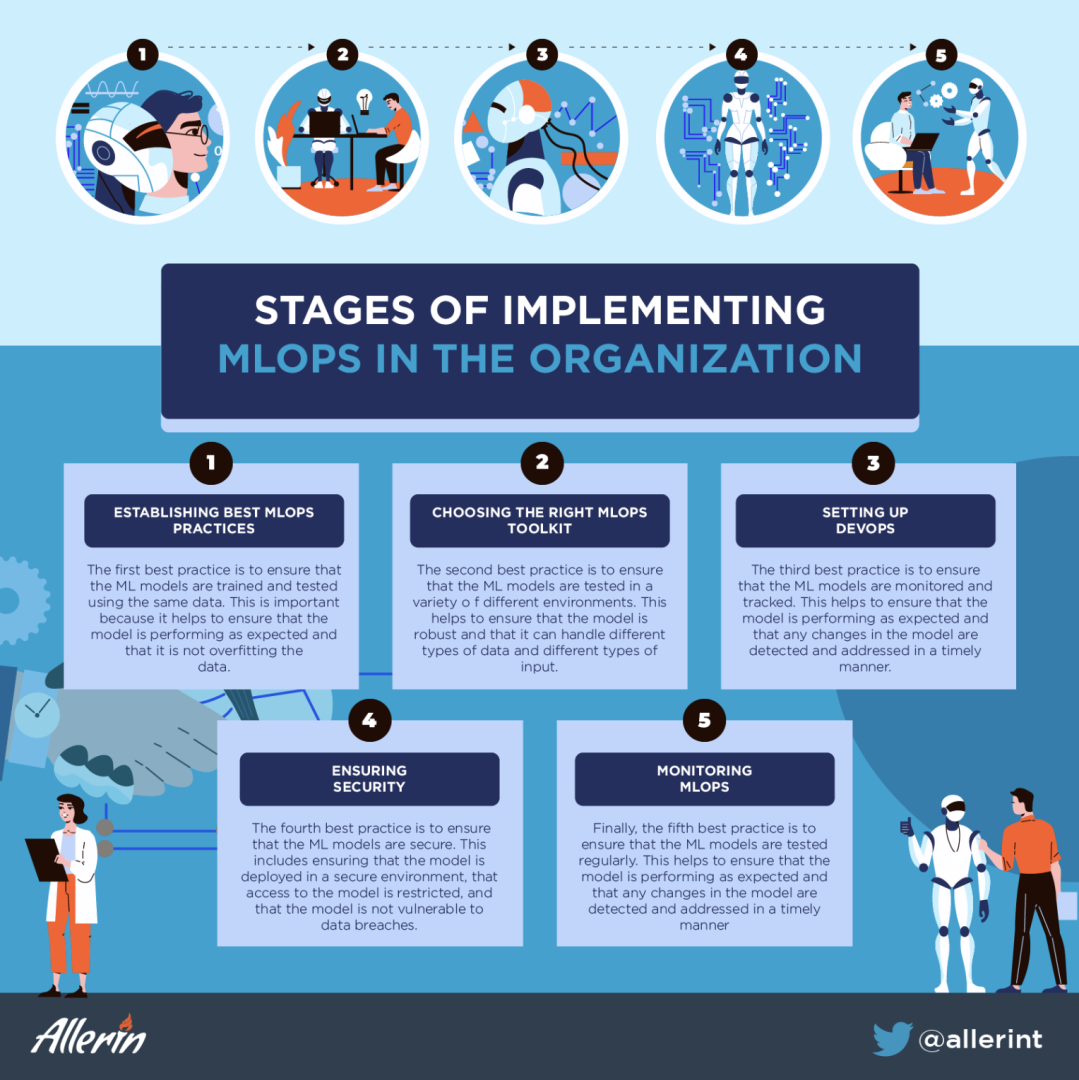Comments
- No comments found

MLOps, which stands for machine learning operations, is an emerging field of engineering that combines the best practices of DevOps with machine learning.
MLOps is all about automating the process of deploying and managing ML models. It is a powerful tool that enables businesses to quickly and efficiently deploy ML models to production.
MLOps is a relatively new concept in the world of machine learning. It is an approach to managing the whole machine learning lifecycle, from data preparation to deployment and maintenance. By leveraging the principles of DevOps, MLOps seeks to make the development of ML applications more efficient, reliable, and cost-effective.
The main objective of MLOps is to create an effective and efficient deployment and maintenance process for ML models. This involves automating the steps involved in the ML lifecycle, such as data preparation, model training, model deployment, and model monitoring. By automating these steps, businesses can reduce their time to market and increase their efficiency.
In addition to automating the ML lifecycle, MLOps also enables businesses to monitor their models and ensure that they are performing as expected. This includes monitoring the accuracy of the model, detecting data drift, and ensuring that the model is deployed in a secure and reliable environment.
Once the best practices for implementing MLOps have been established, the next step is to automate the MLOps processes. Automating the processes involved in the MLOps lifecycle can help to make the process more efficient and cost-effective. Some of the processes that can be automated include data preparation, model training, model deployment, and model monitoring. By automating these processes, businesses can reduce the time it takes to deploy and maintain ML models.
In addition to automating the processes involved in the MLOps lifecycle, businesses should also look into automating the security of the ML models. This includes ensuring that the model is deployed in a secure environment and that access to the model is restricted.
Finally, businesses should look into automating the monitoring of ML models. This includes monitoring the accuracy of the model, detecting data drift, and ensuring that the model is deployed in a secure and reliable environment.
Implementing MLOps in your business requires following certain best practices. These best practices help businesses ensure that their ML models are deployed and maintained in the most efficient and cost-effective manner.

The first best practice is to ensure that the ML models are trained and tested using the same data. This is important because it helps to ensure that the model is performing as expected and that it is not overfitting the data.
The second best practice is to ensure that the ML models are tested in a variety of different environments. This helps to ensure that the model is robust and that it can handle different types of data and different types of input.
The third best practice is to ensure that the ML models are monitored and tracked. This helps to ensure that the model is performing as expected and that any changes in the model are detected and addressed in a timely manner.
The fourth best practice is to ensure that the ML models are secure. This includes ensuring that the model is deployed in a secure environment, that access to the model is restricted, and that the model is not vulnerable to data breaches.
The fifth best practice is to ensure that the ML models are tested regularly. This helps to ensure that the model is performing as expected and that any changes in the model are detected and addressed in a timely manner.
In order to automate the MLOps processes, businesses need to have access to the right tools and technologies. There are a variety of different MLOps toolkits available on the market. These toolkits can help businesses automate the MLOps process and make it more efficient.
Some of the most popular MLOps toolkits include Amazon SageMaker, Azure Machine Learning, Google Cloud ML Engine, and IBM Watson Machine Learning. These toolkits provide businesses with the tools and technologies necessary to automate the MLOps process.
In addition to the MLOps toolkits, businesses should also look into using DevOps tools and technologies. DevOps tools such as Docker, Kubernetes, and Jenkins can help businesses automate the process of deploying and managing ML models.
Once the MLOps toolkits have been chosen, businesses need to set up the DevOps environment for MLOps. This involves setting up the necessary infrastructure and tools for deploying and managing ML models.
The first step in setting up the DevOps environment for MLOps is to set up a continuous integration and continuous delivery (CI/CD) pipeline. This pipeline helps to ensure that the ML models are deployed and managed in an efficient and cost-effective manner.
The second step is to set up an automated testing framework. This helps to ensure that the ML models are tested and that any changes in the model are detected and addressed in a timely manner.
The third step is to set up a version control system. This helps to ensure that the ML models are versioned and that any changes in the model are tracked and monitored.
The fourth step is to set up a security framework. This helps to ensure that the ML models are deployed in a secure environment, and that access to the model is restricted.
Security is an important part of MLOps. There are a variety of different security measures that businesses can take to ensure the security of their ML models.
The first security measure is to ensure that the ML models are deployed in a secure environment. This includes ensuring that the model is deployed in a secure cloud environment and that access to the model is restricted.
The second security measure is to ensure that the ML models are encrypted. This helps to ensure that the model is not vulnerable to data breaches.
The third security measure is to ensure that the ML models are regularly tested. This helps to ensure that the model is performing as expected and that any changes in the model are detected and addressed in a timely manner.
The fourth security measure is to ensure that the ML models are monitored. This helps to ensure that the model is performing as expected and that any changes in the model are detected and addressed in a timely manner.
Once the MLOps processes have been automated, and the DevOps environment has been set up, the next step is to monitor the MLOps processes. This helps to ensure that the ML models are performing as expected and that any changes in the model are detected and addressed in a timely manner.
The first step in monitoring MLOps is to set up a monitoring system. This system helps to track the performance of the ML models and detect any changes in the model.
The second step is to set up a logging system. This system helps to track any errors or warnings that arise during the MLOps process.
The third step is to set up an alert system. This system helps to alert the team when the ML models are not performing as expected and when changes in the model need to be addressed.
The fourth step is to set up a dashboard. This dashboard helps to visualize the performance of the ML models and any changes in the model.
Although implementing an MLOps project is not easy, it is not an impossible task either. MLOps is an innovative approach to deploying and managing ML models more efficiently and cost-effectively. By following the best practices for implementing MLOps and by leveraging the right tools and technologies, businesses can quickly and efficiently deploy ML models to production.
Naveen is the Founder and CEO of Allerin, a software solutions provider that delivers innovative and agile solutions that enable to automate, inspire and impress. He is a seasoned professional with more than 20 years of experience, with extensive experience in customizing open source products for cost optimizations of large scale IT deployment. He is currently working on Internet of Things solutions with Big Data Analytics. Naveen completed his programming qualifications in various Indian institutes.
Leave your comments
Post comment as a guest